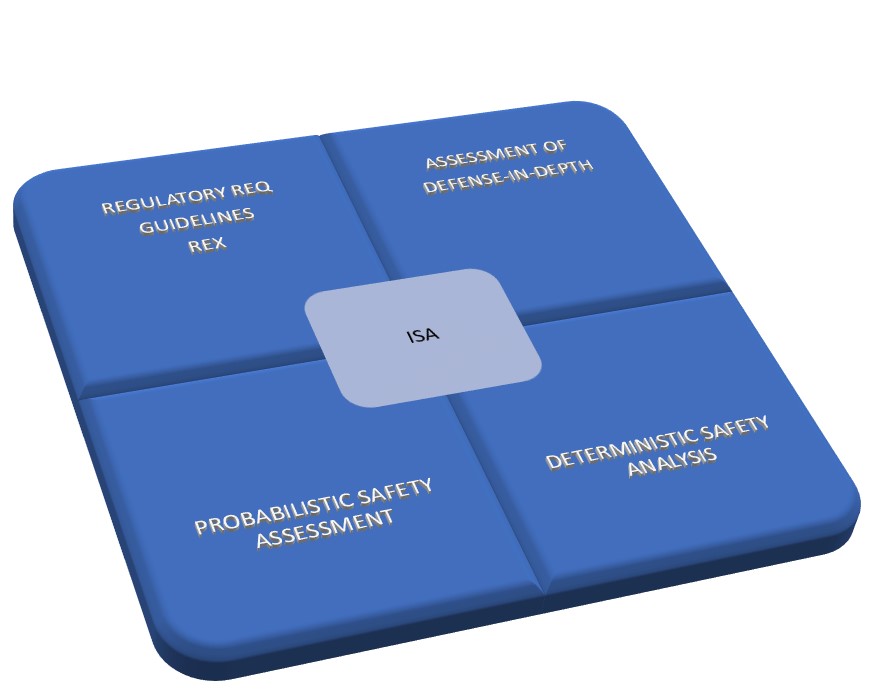Practical example of application of an Integrated Safety Approach (ISA): NSRD of the post-operational phase of the Belgian NPPs
As already described in a previous ETSON News from Bel V (see https://www.etson.eu/node/250 published on 31/01/2022), the NPP licensee Electrabel is currently working on the preparation and execution of the post-operational phase of the life of the Belgian NPPs (POP). The POP directly follows the definitive shutdown and aims in a time period of approximately 5 years at evacuating the spent fuel and the operational waste from the units, and at preparing the dismantling activities. During this phase, due to the progressive reduction of risks, the constraints of the Nuclear Island (NI) and the associated Structures, Systems and Components (SSCs) can be adapted and reduced.
For information the first Belgian unit to be definitively shutdown was Doel 3, at the end of September 2022, and a second unit is planned to be stopped in early 2023 (Tihange 2).
One of the most important outputs from the licensee (and for Bel V) for the preparation of the POP was the Nuclear Safety Requirements Document (NSRD). Actually, the main objectives of the NSRD were to:
- Define the legal and regulatory framework for the design basis of the Nuclear Island during the POP after final shutdown to ensure adequacy of the NI with the residual risks mainly but not limited to spent nuclear fuel.
- To contribute to the optimization of the NI by maintaining both an uncompromised level of safety and a reasonable classification, and associated maintenance, surveillance and ageing management programs of the SSCs required for the safe operation during the POP. The general approach governing the NSRD of Electrabel is an Integrated Safety Approach (ISA). Such an approach was recommended and proposed by Bel V following repeated observations of weaknesses in the way of dealing with (important) safety cases by Electrabel in the past years, such as deviation observed in assessment of protection and mitigation measures against some design basis accidents (SGTR and FWLB) or in the “Justification of continuing operation” process, etc.
The main expectations from Bel V for an efficient ISA are to:
- Integrate (to avoid partitioning of) the different aspects of safety, e.g. design, operation, organization, or verification, including deterministic safety analysis (DSA), probabilistic safety analysis (PSA), the regulatory framework and the operating experience, and a correct application of the different levels of Defense-in-Depth (DiD) philosophy (see [Pic. 1]).
- Gain more insight in the safety analysis.
- Obtain a more global vision of the safety.
- Identify safety improvements more efficiently (for the different aspects of safety: design, operation, organization, or verification) to be required, with a focus on plant safety improvements.

Therefore, Bel V performed an in-depth review and assessment of the Electrabel NSRD as a practical application of an ISA. In that context, Bel V identified some deficiencies in the application of the ISA by Electrabel with respect to its own expectations mainly because the adaptation to POP of safety aspects like utility organization (including human resources, management and work procedures) and human factors (including knowledge and training) were not explicitly addressed. Other discussions also occurred regarding classification and associated operational aspects of the SSCs required for the safe operation during the POP. Beyond these general findings, the NSRD correctly addressed design aspects and other aspects related to design, i.e. operational aspects (maintenance, surveillance and ageing management programs, procedures, operational technical specifications) and verification aspects (mainly DSA, and PSA).
After additional clarification provided by Electrabel, Bel V was finally able to conclude that the methodology proposed by Electrabel for the definition of the design basis of the Nuclear Island is adequate and constitutes a practical application of an ISA approach meeting Bel V's related expectations.
Marc Vincke
Bel V
marc.vincke@belv.be